|
As a young college student studying health and fitness, I never expected that I'd have a desk job. Certainly I'd be on my feet, active, exercising, training people all day long, right? Turns out, my job is the exact opposite. Working for SparkPeople allows me to share my passion for health and fitness with so many people, helping them get fit and reach their goals. I love what I do. But I don't love sitting on my rear for more than 40 hours per week while I do it. Being handed a "desk sentence" at such a young age is not what I expected. Although I exercise most days of the week and try to maintain as active of a lifestyle as possible, I'm suffering from too much sitting. Lately, my back aches most of the time, sometimes so badly that I can't sit, stand or lie down comfortably for days. My shoulders round forward, which is doing a number on my posture. My head and neck are in a permanent "forward" position, and my hips are tight. Throughout the day, I notice my shoulders creeping up toward my ears with tension and have to remind myself to relax them down. Ten, 30, 60, even 90 minutes of exercise a day doesn't seem to matter much when I'm spending all the rest of my time on my butt (or on my back, sleeping). I'm know I'm not alone. Women's Health magazine recently reported on a poll of 6,300 people conducted by the Institute for Medicine and Public Health. They discovered that on average, we spend 56 hours a week sitting behind a computer, at the wheel or in front of the TV. A sedentary lifestyle seems to be the most common side effect we suffer from life in a modern world. We drive (or ride public transit) to work, sit all day at our white collar jobs, make the long commute home (sitting again), and then feel so achy, tired or exhausted from our long days of (mentally) hard work that we plop down on the couch and stare at the TV or computer for a few more hours before we lie down and go to bed. We know a sedentary lifestyle is bad for us. It definitely contributes to weight issues, heart disease, poor blood sugar control, and a host of other ailments. For awhile, I felt hopeless. Destined for discomfort. Banished to a life of back pain. But lately, I've been tackling my issues head on by getting up from my desk throughout the day, targeting the muscles made weak or tight by sitting while I work out, and changing how I use my body while I use the computer. I'm happy to report that it's been paying off. And since many of you struggle with sedentary jobs that create all sorts of muscular imbalances, which lead to pain and discomfort, I'm sharing a new workout plan with you. This workout involves three components: stretching, strengthening, and standing. Incorporate what you can during your workday, but these are suggestions for exercises to include in your fitness program--not necessarily at your desk. (Here's a shortened version that's printable and can be added to your SparkPeople Fitness Tracker with one click. Stretch When we spend a lot of time at a desk, using a computer, driving a car, or even preparing food in the kitchen, we tend to lean forward, round our backs (spinal flexion), hunch our shoulders, and push our heads forward. (Don't believe me? Take note at how often your head actually touches your head rest while you drive.) Do that for hours each day for years and it affects your posture, which creates imbalances of tight and weak muscles throughout your body. Sitting, especially, does a number on the spine and tightens the hip flexors (which remain in a shortened position), chest and shoulders, which pull everything out of alignment. To counteract these effects, the following chest, hip, spine and shoulder stretches should be part of your routine EVERY DAY. These are going to help move your body in the opposite direction. Do them regularly throughout the day while you sit at your desk. Do them after each workout. Do them as often as you can. Hold each stretch for 15-30 seconds at a time. Many of these you can do at your desk throughout the day.
Strengthen To counter all that sitting and the poor posture that results, we need to strengthen muscles on the back of the body, as well as the core. Focus on these exercises during twice-weekly strength training sessions, aiming for 2 sets of 8-15 reps. Be sure to check out SparkPeople's Better-Posture exercises for more ideas.
Stand It may seem obvious, but the more you can stand during your workday and outside of work, the better off you'll be. I was so tired of sitting all day at work and feeling uncomfortable that I made my own standing workstation for free. Instead of buying a fancy standing desk for several hundred dollars (yep, I looked into it), I set up my computer on a bar-height table we already had at the office. Perhaps you even have one at home! This is a much more economical solution that even your employer might be able to get behind. Here are some additional standing-related tips for your day.
Over the last few weeks, I've been standing more, stretching my chest and hips, and working to strengthen those often-neglected muscles along the back of the body. And I've noticed a lot of improvements in my back pain. It comes on less often and goes away sooner. I can also stand longer and longer at my new upright workstation before taking a break in a chair, and I've noticed my spine feeling more mobile and flexible—something I haven't felt in years, despite a steady practice of Pilates. Finally, I'm doing right by my body even though I have a sedentary job. Our bodies were designed for motion, not sitting, so let this serve as a reminder to get up from your chair and get active as often as possible throughout the day. Do you have a sedentary job, or sit most of the day? Have you suffered pain, fatigue or poor posture as a result? |
Popular Entries
Related Entries
More From SparkPeople
|



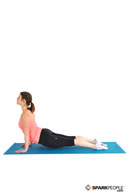

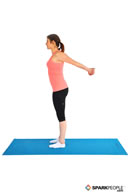

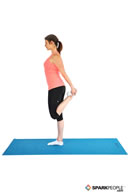

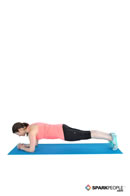
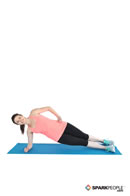
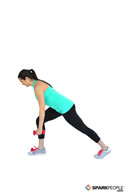






.jpg)
















